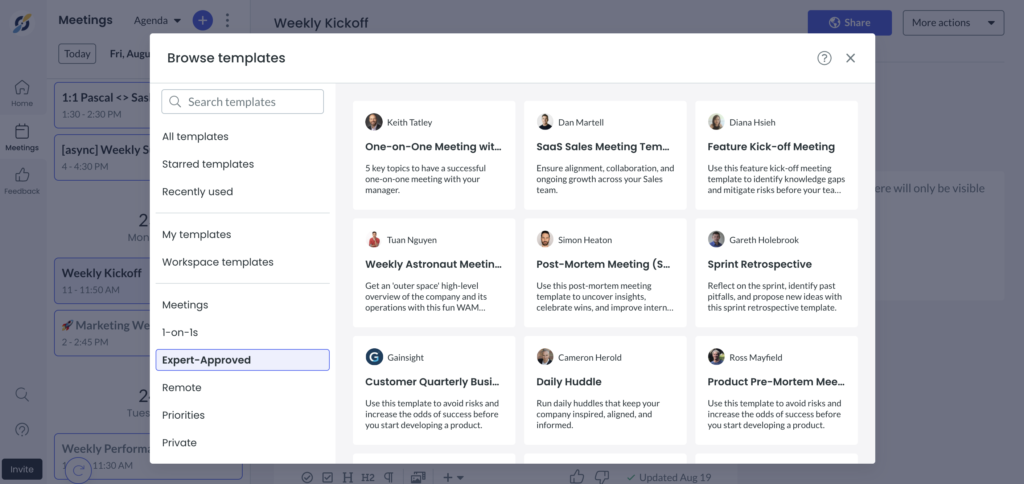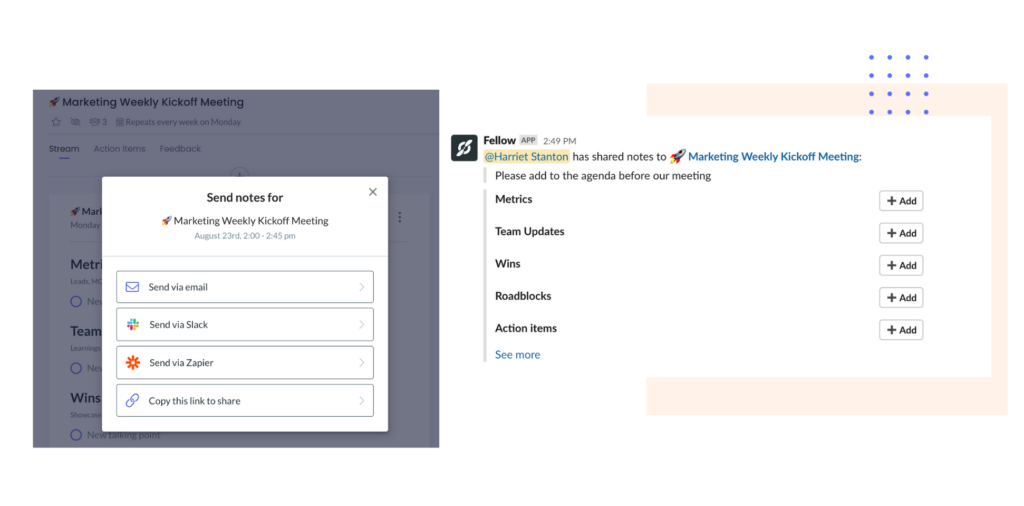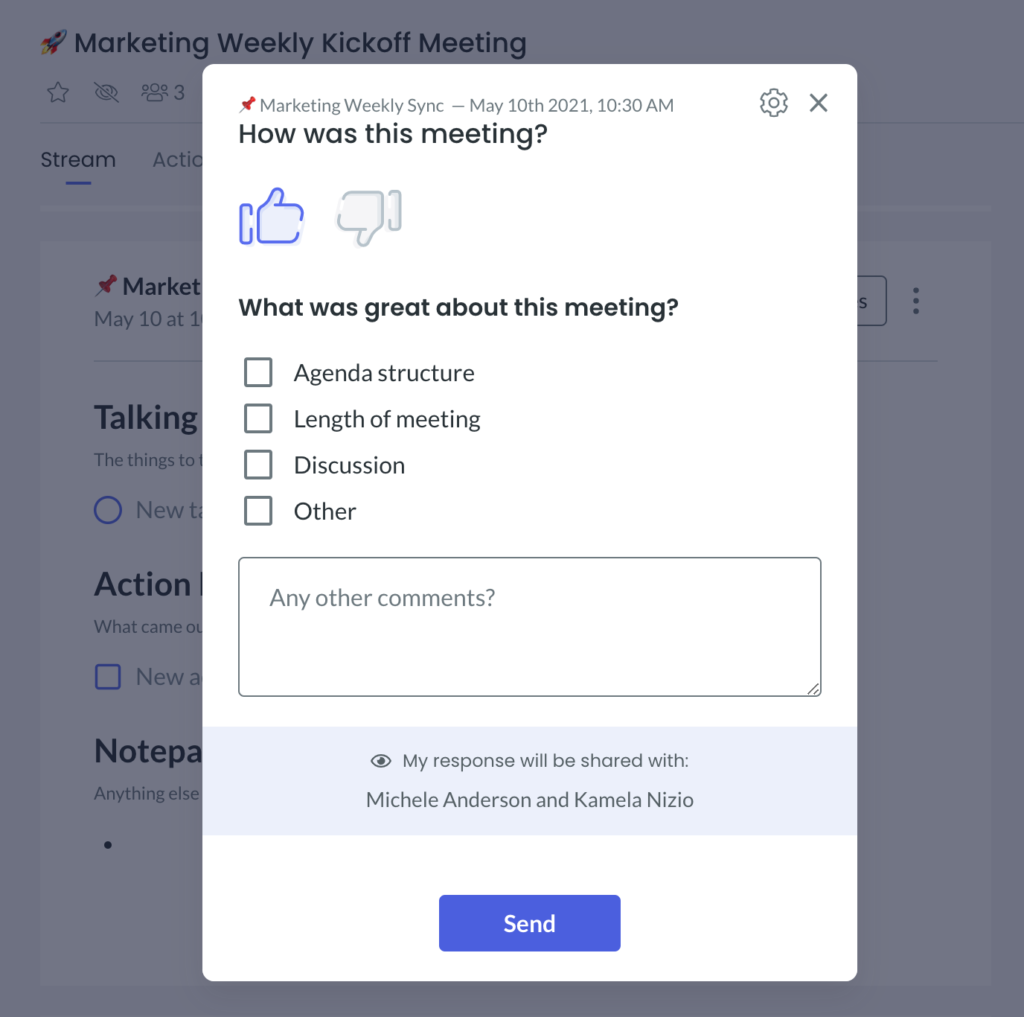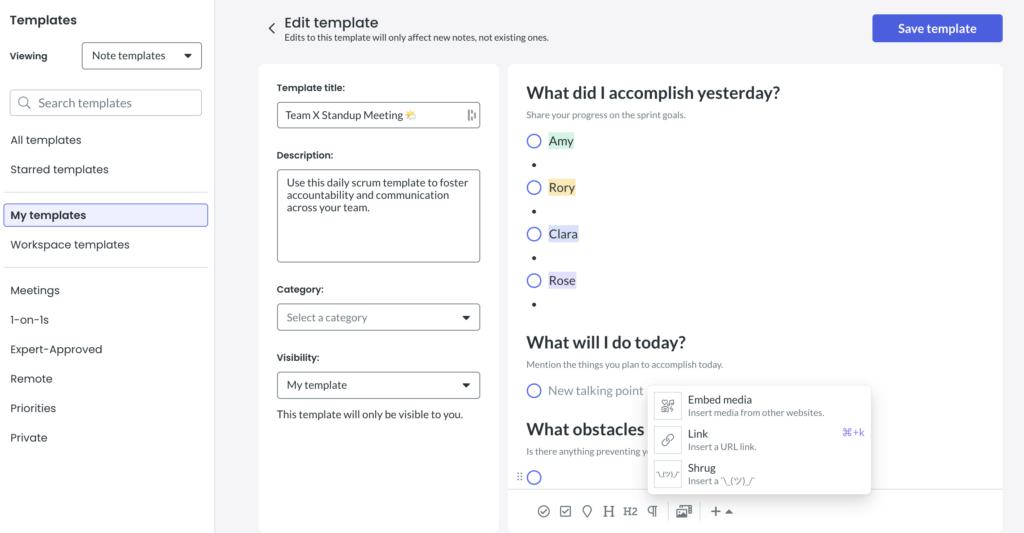Fellow Tips: Use Meeting Agenda Templates
Apply, set, or create templates in Fellow to make your meetings more effective!
Meetings are a staple part of the average work week. When done right, meetings can foster collaboration, address problems, and generally move work forward. But when done badly – well I think we all know what those meetings are like…
These terrible meetings are a pervasive issue that shows up in every company- from startups all the way up to the Fortune 500 — and results in hours of lost productivity.
The good news is it doesn’t need to be that way.
Our Fellow Tips series will highlight easy steps that you can take to make every meeting you schedule more productive and worth showing up to.
Starting with tip #1: Use Fellow’s meeting agenda templates.
In the Future of Meetings Report 2021, we found some of the most common meeting pet peeves are:
- when people go off topic
- poor time management
- and lack of preparation.
Luckily, there’s an easy way to ease some of these headaches – use a meeting agenda template! Here are some tips to take up the practice of using meeting agenda templates with Fellow:
- Structure your meeting like an expert
- Make it easy to prepare in advance
- Create and customize
- Build consistency
1 Structure your meeting like an expert
It sounds a bit cliche, but you don’t need to reinvent the wheel to use a meeting agenda template. Instead, try out the tried and true structure used by industry experts like Russ Laraway, Diana Hsieh, and Cameron Herald. Fellow’s template library is filled with pre-built templates, so all you need to do is browse and apply the template directly to your meeting note.
To do this, go to the meeting, click on the three dots in the upper right hand corner → Apply a Template and select Expert-Approved from the side panel. If you want to learn more about the template and the rationale, you can view this template right on the blog.
You can be confident that your meeting is formatted in an effective manner!

2 Make it easy to prepare in advance
Many people agree that the best meetings are when everybody shows up prepared. However, if there is no agenda, it can be challenging for meeting attendees to know what to prepare or what to add to the agenda.
It’s hard to know what to add on a blank page. It’s much easier to add content when there are headers and a general structure.
So apply a template to the meeting note, then share the agenda via email, Slack, or Microsoft Teams by using the Send notes button. Meeting attendees will know what type of things to add and will be able to see if they need to prepare anything else. If you use Slack, you can automate this step using the Slack workflow builder.

3 Create and customize
Odds are that your meeting won’t be perfect the first time. After you’ve held that meeting a few times, ask the meeting participants to give feedback on how the meeting is going. By clicking on the thumbs up/thumbs down button at the bottom of the note they can give quick feedback including what they think of the agenda structure.

Use this feedback to optimize your meeting agenda. Edit an existing template with new headers, etc. Or build a new template from scratch – both are possible in Fellow. The easiest way to do this is by going to the main Template section and clicking on the template that you would like to edit or selecting the Create new template option in the upper right hand corner of the page.
The template is very customizable – you can add in images, embed Miro or Figma files, and colour code with highlight and text colours. Don’t worry if you’re not in love with the template, you can come back and edit it anytime.

4 Build consistency
Give structure to your regular team meetings by setting it up so that the same template is applied every week. In Fellow, go to the meeting and click on More actions → Stream settings to set the template for the recurring meeting.
As a bonus, create consistency across your organization by creating workspace wide templates.

Interested in more Fellow tips? Check out the next article in this series – Collaborate on agendas in advance










